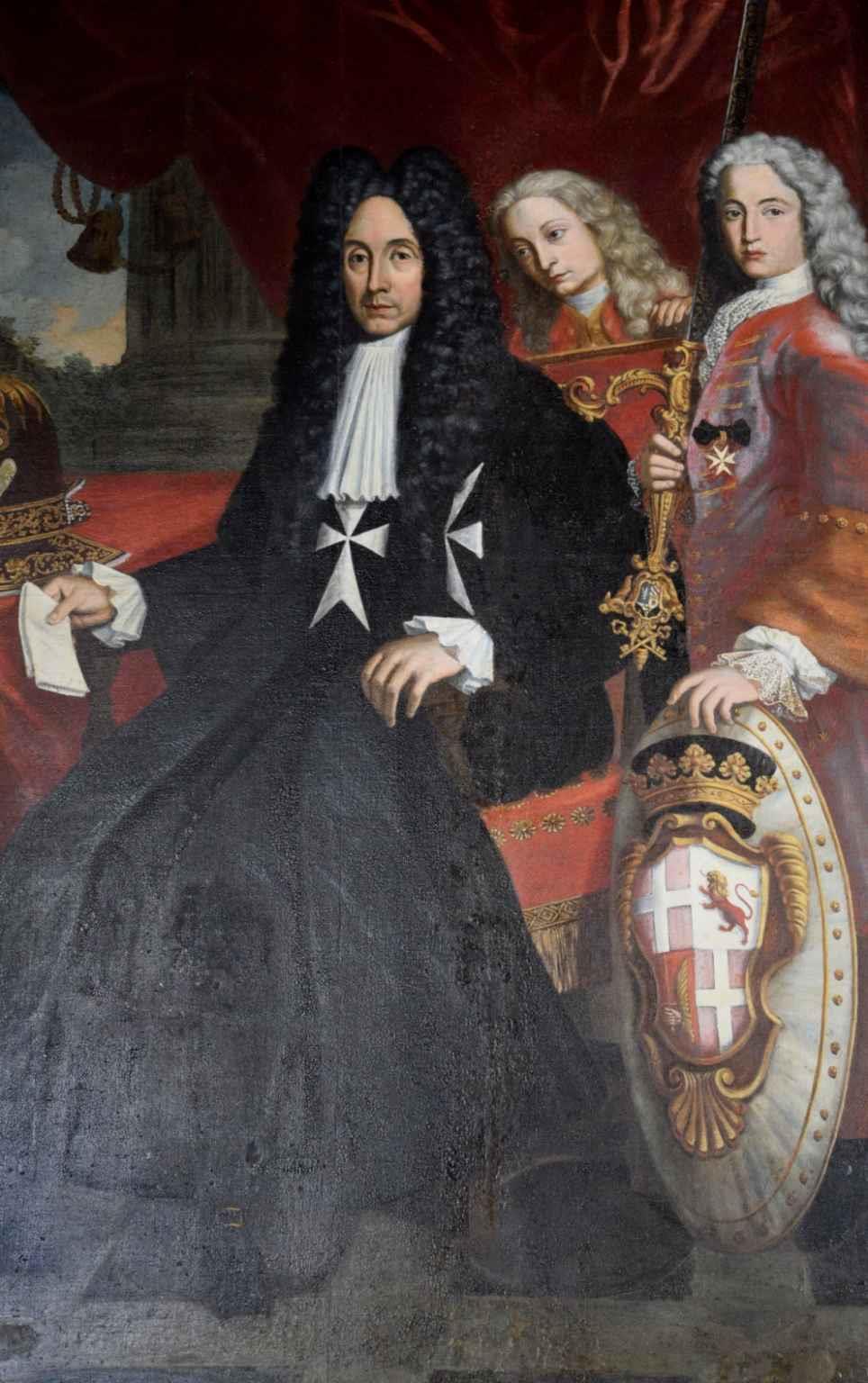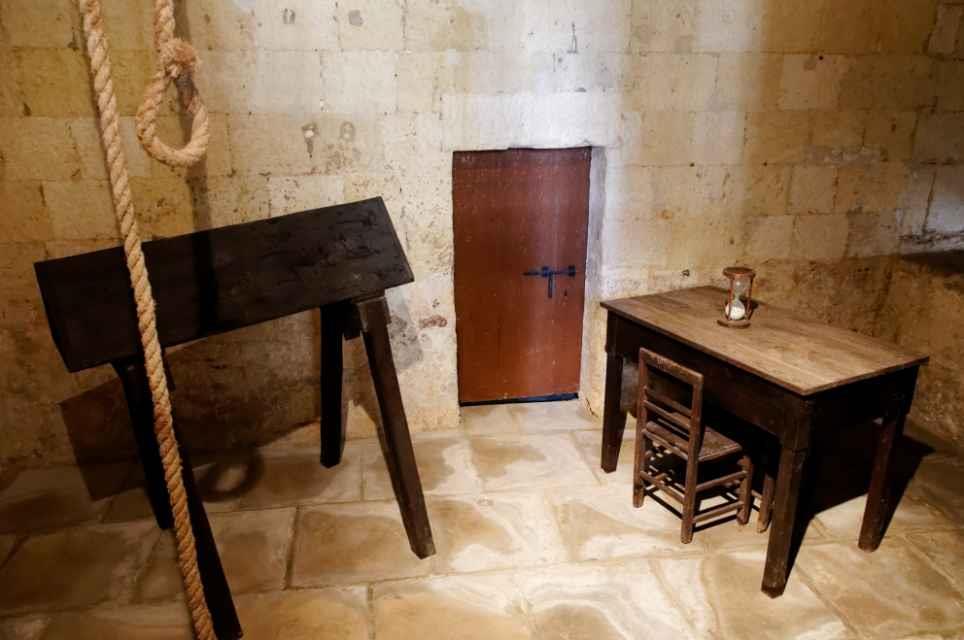The enchanting island of Gozo provides us with many fascinating legends, passed down from one generation to another, and which are said to have happened there in the course of its thousands of years of fascinating history: from the story of Sansuna, the giantess who supposedly built the Neolithic temples of Ġgantija, to the dramatic rescue by St. Demetrius of a young man abducted by pirates.
One of the more intriguing legends is that of the golden calf. The legend states that this ancient artefact was discovered by a Gozitan farmer in one of his fields, and not being knowledgeable about such things, he naively went to a local goldsmith for advice about its true worth. The opportunistic goldsmith tricked the farmer into handing over to him his newfound treasure, by claiming that according to the laws of the country, such discoveries had to be turned over to the Grand Master, as the ruler of the land. Promising to take care of the matter himself, he instead kept possession of the precious statuette. When the farmer’s wife realised this, she was furious and started to tell everyone what happened. Not surprisingly, the story reached the Grand Master, who after talking with the farmer to verify the facts, ordered the arrest and interrogation of the goldmsith. However, despite undergoing brutal torture that eventually resulted in his death, the goldsmith refused to divulge the whereabouts of the golden calf, leading to it being lost for ever.
But this, of course, is just a tale, based on pure fiction, right? Or is it? Actually, it turns out that there is a very strong historical basis for this legend: the story of the alleged unearthing, in the year 1729, of a golden calf by the Gozitan Antonio Pace, that would lead to the arrest, torture and death of fellow Gozitan Giuseppe Cassar, for having refused to divulge the location of the treasure to the Grand Master, Antonio Manoel de Vilhena. So how did the real version go?
According to Antonio Pace, the man who first discovered the treasure, a dream he had led him to an area near an old church in the vicinity of Dwejra, where he somehow came across this precious statuette in the form of a calf. Allegedly made of solid gold, its eyes were in the shape of two precious gems, while another was stuck to its forehead. A considerable amount of gold coins worth several thousand scudi completed the haul.

While such a story might seem quite sensational, the occasional finding of treasure was not so uncommon in the Maltese Islands, with their long history of colonisation by various ancient civilisations. In addition, the constant risk of pirate raids and invasions would in the past have encouraged anyone who owned a lot of money or precious items, to hide them away to prevent them from being stolen, especially before the existence of banks or other secure places where they could be deposited. So such a discovery as that of Antonio Pace would not have been so inconceivable.
But although many might have thought of him as being extremely lucky at such a find, he did not enjoy his newfound wealth for long, as somehow, he claimed, he was duped into passing his precious discovery over to Giuseppe Cassar, a prosperous and well-known businessman from Gozo, who also happened to be a friend of the Portuguese Grand Master Vilhena. News about the discovery soon reached the ears of the Grand Master himself, who summoned Cassar and requested him to give up the treasure since by law, it rightfully belonged to him as the island’s sovereign. Cassar, however, denied the story completely, claiming it was a total fabrication. It was at this point that Vilhena decided to resort to torture to make him talk. Alas, it was to no avail: despite being made to suffer excruciating pain, using methods such as the tormento della corda and the cavalletto, the eldery Cassar stuck to his guns and pleaded his innocence. Although the courts had already sentenced him to row on the Order’s galleys for life, he never got to serve his sentence, as he died a few days later from the serious injuries that had been inflicted upon him, while all his property was confiscated and handed over to the Grand Master in lieu of the treasure.
As all of this is well-documented, there is no doubt that the popular legend is based on a real life event. But that still leaves one other question: did Antonio Pace really discover a golden calf, or any treasure at all? Many at the time surely believed him, including prominent figures, such as the esteemed Gozitan historian Agius de Soldanis, who came to the conclusion that the relic was surely a Phoenician artefact. But there were also others who were more sceptical of the whole affair, left unconvinced by several aspects of the story, such as the supposed dream that had led Pace to the discovery, and the apparent ease with which he had supposedly been convinced to hand his precious find over to Cassar for no apparent reward.

A closer look at the documented evidence also throws further doubt onto the story, and suggests other possible motives behind the whole thing. Approximately two months after Giuseppe Cassar’s death, an official contract was drawn up, stating that Grand Master Vilhena was generously donating the confiscated property to the hospital of St. John in Gozo. Apart from the fact that he might have chosen to donate to a Gozitan charitable institution in order to appease the locals, who might have been upset at the unjust treatment meted out to one of their own, the details from the contract also raise some interesting questions. The document describes in detail the wealth that had been owned by Cassar, including a number of properties in various parts of Gozo. But actually, most of his income came from lending considerable sums of cash to various people. Although the first thought might be that Antonio Pace could have been one of Cassar’s clients, who decided to get rid of him because he could not afford to pay him back, no mention of his name was found in Cassar’s records. Another possibility could be that Pace had requested a loan, and became angry when Cassar had refused, perhaps because he doubted Pace’s ability to pay it back.
So did Antonio Pace invent the story of the treasure in order to get Giuseppe Cassar in trouble with the authorities? While this cannot be proven, there are certainly strong suspicions that suggest that is exactly what happened. The only description of the statue that we have is the one provided by Pace himself, who was the only person who claimed to have seen it with his own eyes. Giuseppe Cassar, on the other hand, continued to deny any knowledge about the treasure throughout long hours of horrific torture, in fact right up to his death as a result of it. All this suggests the likelihood that the golden calf was nothing but a figment of Pace’s imagination, likely borne out of an intense fury and desire for vengeance, and which resulted in such terrible consequences.
References: Zammit, W. (2016). Find or Fiction? The Gozo Vitello d’Oro Treasure of 1729. Malta: Symposia Melitensia Number 12
Matthew Camilleri is Tours Manager at Colour My Travel
www.colourmytravel.com